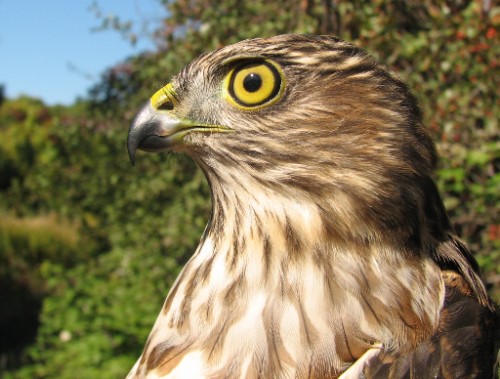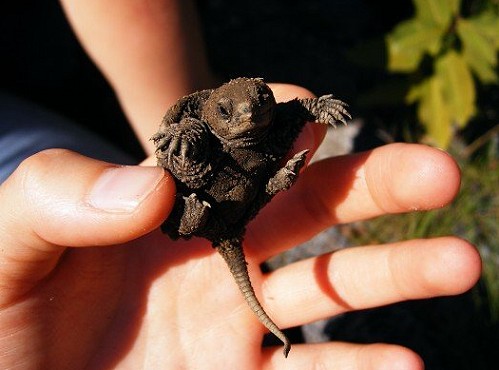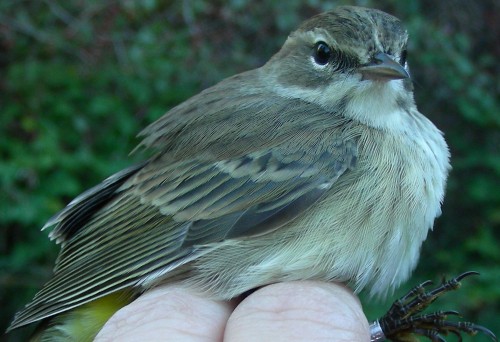|
McGILL BIRD OBSERVATORY |
|||||||||||||||||||||||||||||||||||||||||||||||||||||||||||||||||||||
Welcome
to the McGill Bird Observatory weekly report.
Click here for a complete listing of our archives.
Banders-in-charge: Marie-Anne Hudson, Barbara Frei Assistants: Nick Ackeson, Jean Beaudreault, Veronik Campbell, Sophie Cauchon, Natalia Castellanos, Han Chen, Shawn Craik, Diane Demers, Jean Demers, Emilie Dion, Dominique Fauteux, David Fishman, Linda Fishman, Val Francella, Jeff Harrison, Issac Hébert, Gay Gruner, Helen Leroux, Alex Liautaud, Alyssa Macleod, Mike Mayerhofer, Sophie Mazowita, Heather Milligan, André Pelletier, Greg Rand, Katleen Robert, Emilie Roy-Dufresne, Clémence Soulard, Rodger Titman, Shona Watt, Sarah Woods Notes: The past two days have made up for a pretty slow week, with 117 birds banded! It appears the birds have decided that they just can’t wait for those north winds anymore, and they’re moving despite the steady south or south-west winds that have been blowing for the past few days. Hopefully this will let us catch up to last year’s fall numbers over the next few weeks. Although once again the number of birds banded this week is lower than during the same period last year, the diversity of species is again higher, with 39 this year compared to 33 in 2006. Likewise the 82 species observed this week beat out last year's 78, and the season-to-date totals in both categories remain well ahead of the pace from 2006. We managed to band a bunch of new species for the fall this week: Eastern White-crowned Sparrow and Golden-crowned Kinglet (these two both right on time, also banded for the first time during week 8 last year), Hermit Thrush, Grey-cheeked Thrush, and Blue Jay. Most of these were new species observed this fall as well, in addition to Rusty Blackbird, Turkey Vulture (FINALLY!), Osprey, Great Black-backed Gull, and Field Sparrow. The top 10 species banded has many new entries this week, despite the White-throated Sparrow maintaining a wide lead. American Goldfinch vaulted to second position after last week’s 8 th spot by landing about 4-6 at a time in the nets a few times this week. As predicted based on our few years of banding at MBO, the Ruby-crowned Kinglet is inching its way up the list, appearing in third place, and likely to peak over the next three weeks. The surprising entries though are the two races of Palm Warbler in sixth and ninth place - counted together they are the third most frequently banded species of the week. The sudden influx of Palms is reminiscent of the 33 that we banded during week 7 of the 2005 fall season, and both of these experiences are in stark contrast to 2006, when the entire fall season yielded only 9. On the other hand, last year we saw a remarkable spike in Yellow-rumped Warbler numbers, peaking with 163 banded in week 8 alone - and this year at the same time they haven't even broken into the top ten for the week! As MBO's history lengthens, it will be interesting to see whether there are consistent two-year cycles for species such as these.
The top 10 observed list has again been rearranged, with Canada Goose and Common Grackle replacing White-throats and Blue Jays in the top three - and in the process matching the top three for this week in 2006. The number of American Robins is definitely on the rise, hinting at big numbers for this October if the rains hold off. Our blackbird flocks have also returned – maybe they read our last weekly update asking them to come back? Let’s just hope they clue in on the fact that our J-trap is full of delicious seeds, just ready to be eaten (if the Chipmunks don’t get them all first that is). Though the top 10 tables don’t always reflect it, when you’re at MBO day after day, you tend to notice the waves of species moving through, whether it’s the Swamp Sparrows and Palm Warblers from Monday and Tuesday, or the White-throated Sparrows from well, every day. And these are just the birds hitting the nets. The skies are now full of Canada Geese, blackbirds and raptors, so there’s always something to look at – yes, even at noon when it’s 25 degrees out! On a closing note, we are thrilled to welcome the new group of Ornithology and Natural History of Vertebrates students, and look forward to their continued participation through the rest of this season and beyond!
|



